Can My Dog Eat That? The Real-Deal Guide to Sharing Fruit Safely
We’ve all been there. You’re slicing up a juicy apple or a sweet piece of watermelon, and you feel those big, hopeful eyes staring up at you. It’s so tempting to share, right? It feels like a natural way to bond. But that little voice in your head asking, “Is this actually safe?” is a good one. You’re right to be cautious. A dog’s system just isn’t built like ours, and some of our favorite healthy snacks can cause them some serious trouble.
In this article
- Your Quick Cheat Sheet: The Yes & No List
- Why Fruit Isn’t a Free-for-All for Dogs
- Watermelon: The Ultimate Summer Treat
- Apples: The Perfect Crunchy Snack
- Berries: Tiny Bundles of Goodness
- A Quick Word on Dried Fruit
- DANGER: Fruits Your Dog Must NEVER Eat
- Your 30-Second Safety Win
- Final Thoughts & A Time-Saving Tip
- Inspirational Gallery
Honestly, I’ve seen this question cause a lot of confusion over the years. So, I’ve put together a straightforward guide to take the guesswork out of it. We’ll cover what’s safe, what’s a hard no, and exactly how to prep the fruit to make it a healthy treat instead of a hazard. Think of this as your go-to handbook for happy, safe snacking.
Your Quick Cheat Sheet: The Yes & No List
For those moments when you just need a fast answer, here’s the bottom line. But please, read the details below on how to prepare these safely!
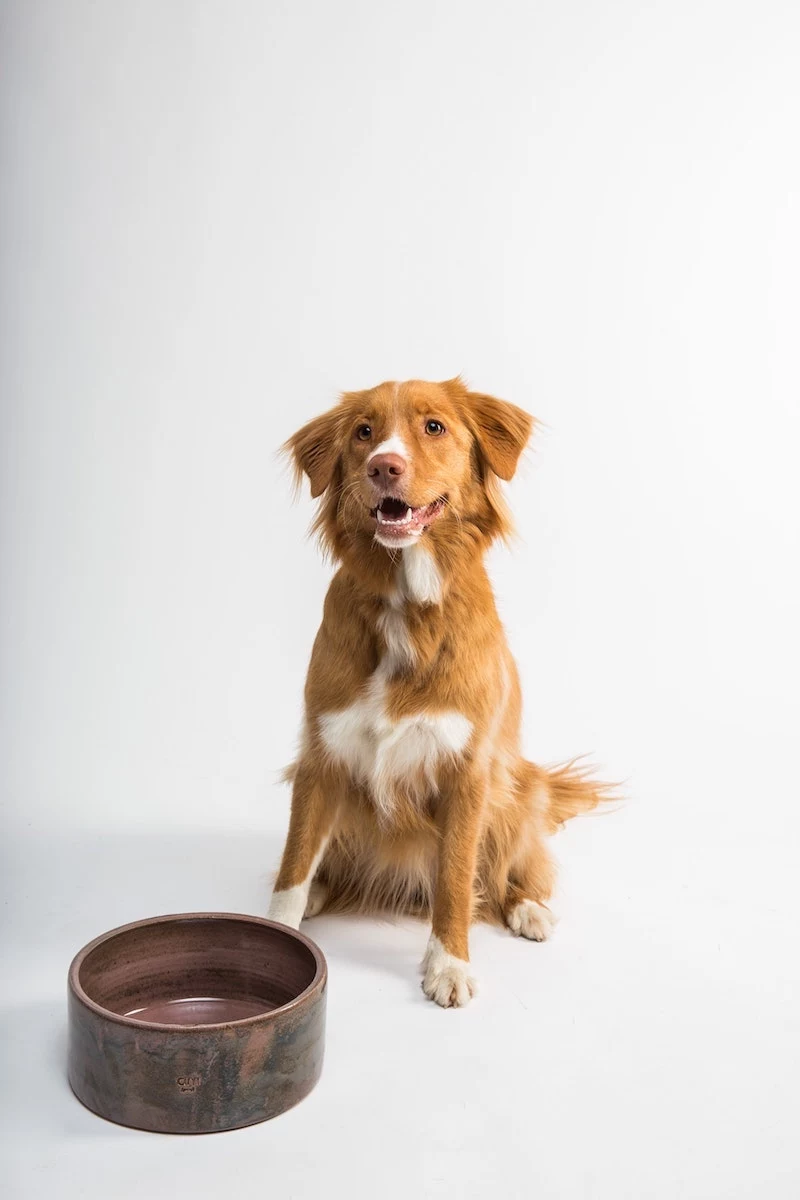
The Safe List (with proper prep):
- Apples (NO core or seeds)
- Watermelon (NO rind or seeds)
- Blueberries & Strawberries
- Bananas (in tiny amounts)
- Cantaloupe (NO rind)
- Peaches (NO pit!)
- Pineapple (NO skin or core)
The DANGER Zone (Never Feed These):
- Grapes & Raisins (EXTREMELY TOXIC)
- Avocado
- Cherries
- The green parts of a tomato plant
Why Fruit Isn’t a Free-for-All for Dogs
Before we get into the fun stuff, we have to talk about why you can’t just hand over a whole banana. Dogs have digestive systems geared for a mostly meat diet. They aren’t designed to handle tons of sugar or fiber all at once.
Fruit is full of natural sugar (fructose). Too much can lead to weight gain, which is tough on their joints, and can cause dental problems down the line. For dogs with issues like diabetes, sugary fruits are a big risk. So, a good rule of thumb is to think of fruit as a special treat, like candy—not a meal.
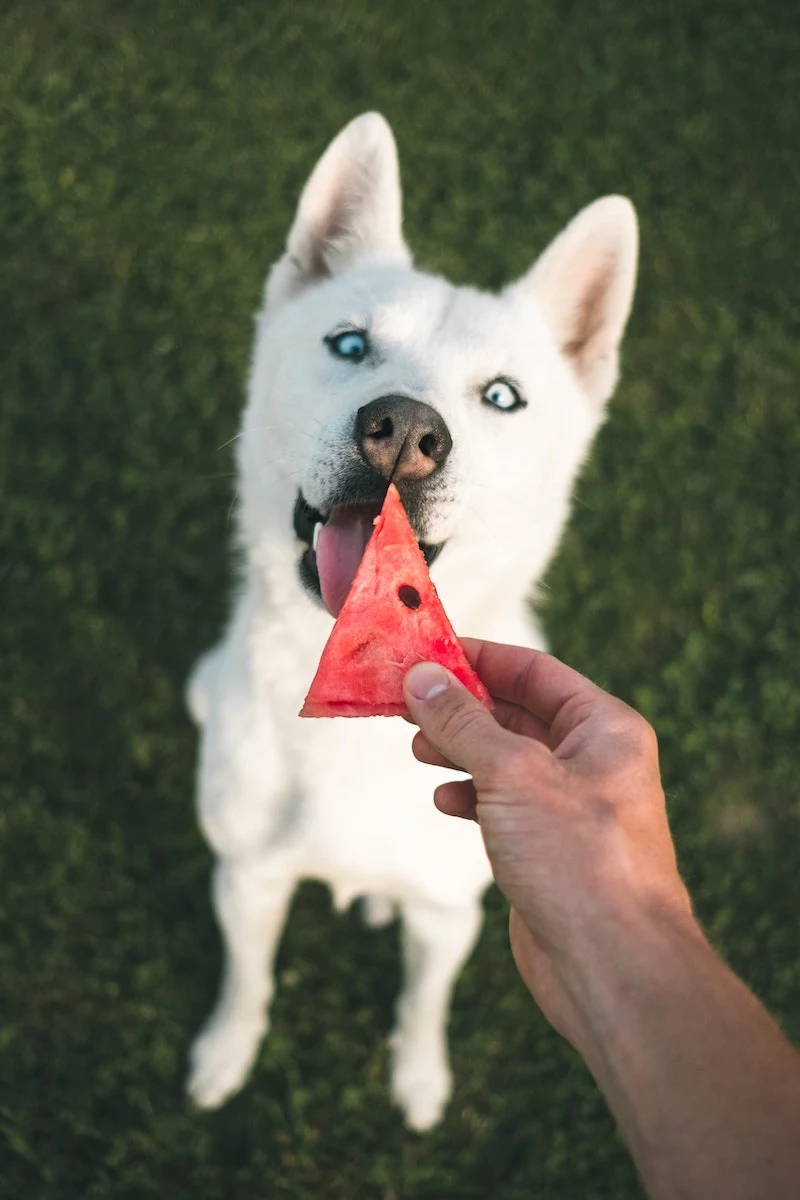
Good to know: The pros recommend the “10% Rule.” This means treats, including fruit, should make up no more than 10% of your dog’s total daily calories. What does that actually look like? Well, a typical 40-pound dog might need around 1,100 calories a day, so their treat allowance would be under 110 calories. A full cup of diced watermelon is only about 45 calories, which makes it a fantastic low-cal option! You can find dog calorie calculators online to get a better estimate for your own pup.
Watermelon: The Ultimate Summer Treat
So, can dogs have watermelon? A big yes! It’s over 90% water, making it amazing for a little hydration boost on a hot day. But preparation is everything.
The dangers are the rind and the seeds. I’ll never forget a client’s dog who got into the trash and ate a big piece of watermelon rind. It caused an intestinal blockage and led to a very expensive, very scary emergency surgery. The rind is just too tough for a dog to digest. The seeds can also cause blockages, especially in smaller dogs. It’s best to just get them all out.
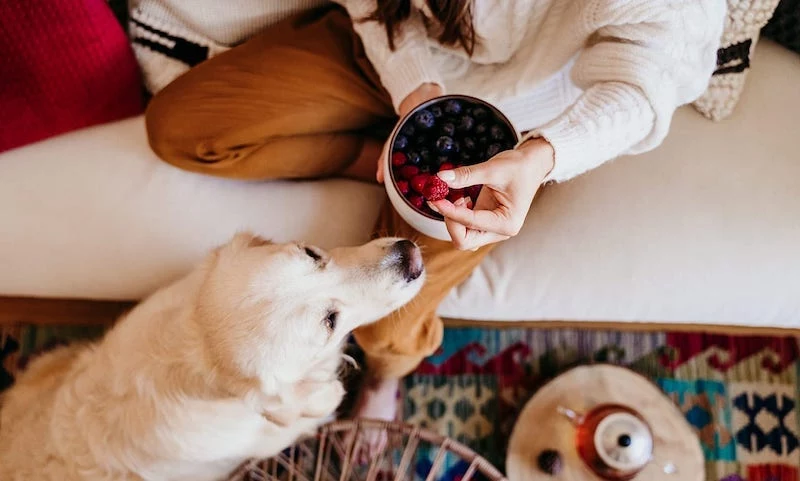
How to Prep It Right:
- Go seedless if you can. It just makes your life easier. If not, take a minute to pick out all the hard, black seeds.
- Wash the outside! Before you cut into it, give the whole watermelon a good rinse. Your knife can drag bacteria from the rind right onto the flesh.
- Cut away all the rind. Slice the pink flesh away from both the green skin and the white part of the rind.
- Dice it up. For a little dog, think half-inch cubes. For bigger dogs, one-inch cubes are perfect.
A little hack I use: Freeze the cubes in an ice tray. It creates a cooling, long-lasting treat that’s especially great for teething puppies. It’s also a budget-friendly move—buy a big watermelon when it’s in season and freeze cubes for later.
Apples: The Perfect Crunchy Snack
Apples are another fantastic choice. That crunch is so satisfying for dogs, and they’re full of vitamins. I often recommend them for older dogs since they are low in fat and protein.
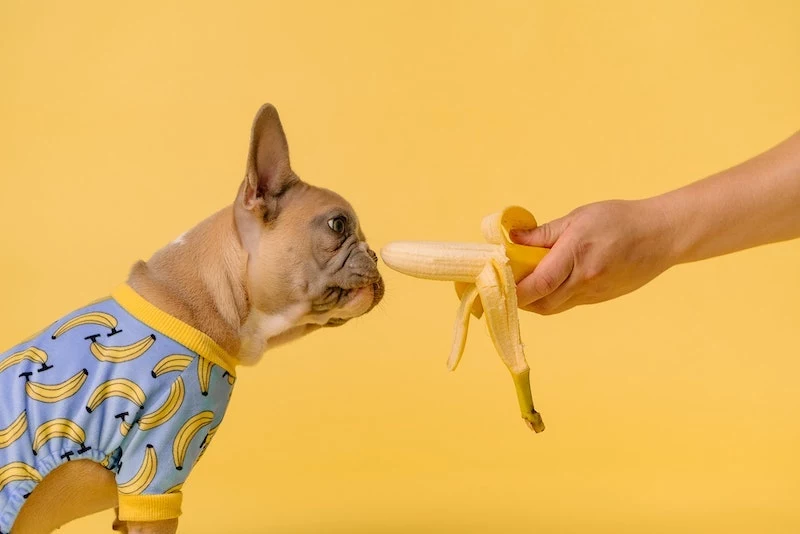
Heads up! The single biggest danger with an apple is the core and seeds. The core is a serious choking hazard, and apple seeds contain a tiny amount of cyanide. While a dog would have to eat a ton of crushed seeds for it to be fatal, why risk it? Just remove the whole core.
How to Prep It Right:
- Wash it well. Scrub the apple under running water. Organic is a great choice here to minimize pesticides.
- Core it completely. An apple corer (you can get one for under $10 at Target or online) makes this super fast. Otherwise, just slice the apple into quarters and cut the core out of each piece.
- Slice, don’t cube. I prefer serving apples in thin slices. It feels safer and reduces the choking risk. For most dogs, the peel is fine and adds fiber, but you can remove it if your pup has a sensitive tummy.
A medium-to-large dog can have two or three thin slices. And whatever you do, DO NOT give your dog commercial applesauce. It’s often packed with sugar or, even worse, xylitol (sometimes called ‘birch sugar’), an artificial sweetener that is incredibly toxic to dogs. Also watch out for xylitol in some peanut butters, yogurts, and other ‘sugar-free’ products.

Berries: Tiny Bundles of Goodness
Blueberries, strawberries, and raspberries are generally safe and packed with antioxidants. They’re a great low-calorie, high-value treat.
Just be sure to wash them, remove the leafy tops from strawberries, and watch for any mold—never feed a dog moldy fruit. For bigger dogs, a few whole blueberries are fine, but for tiny dogs, I’d squish them first to be safe. Strawberries should be sliced.
A few berries are plenty. A small handful for a large dog, or just one or two for a little one. By the way, frozen berries are a fantastic, budget-friendly option. A bag of frozen blueberries from the grocery store for around $5 can last you ages. I love mixing a few into my dog’s regular food for a little burst of flavor.
A Quick Word on Dried Fruit
People often ask about dried fruits like raisins (which are a huge NO, see below!) or Craisins. It’s best to avoid them. The drying process concentrates the sugar way, way down. What was a little sugar in a few fresh cranberries becomes a sugar bomb in a handful of dried ones. Plus, many dried fruits have added preservatives like sulfites that can upset a dog’s stomach.

Stick to fresh or frozen—it’s just safer.
DANGER: Fruits Your Dog Must NEVER Eat
Okay, please pay close attention here. This is the most important part of the whole guide. Some fruits are flat-out poisonous to dogs.
Grapes and Raisins
This is a non-negotiable, all-caps warning. Grapes and raisins are HIGHLY TOXIC to dogs and can cause sudden, irreversible kidney failure. We don’t even know exactly why or how many it takes. For some dogs, one grape can be fatal. The risk is just too high. If your dog eats even one grape or raisin, treat it as a medical emergency. Call your vet immediately—don’t wait for symptoms to show up. If you do see signs, they might include vomiting, sluggishness, or a lack of appetite within 24 hours.
Other Hard No’s:
- Avocado: The pit, skin, and leaves contain a substance called persin that can cause vomiting and diarrhea. The pit is also a massive choking hazard.
- Cherries: The flesh itself isn’t the problem, but the pit, stem, and leaves contain cyanide. The pits are also a perfect size to cause an intestinal blockage. It’s safer to just skip them entirely.
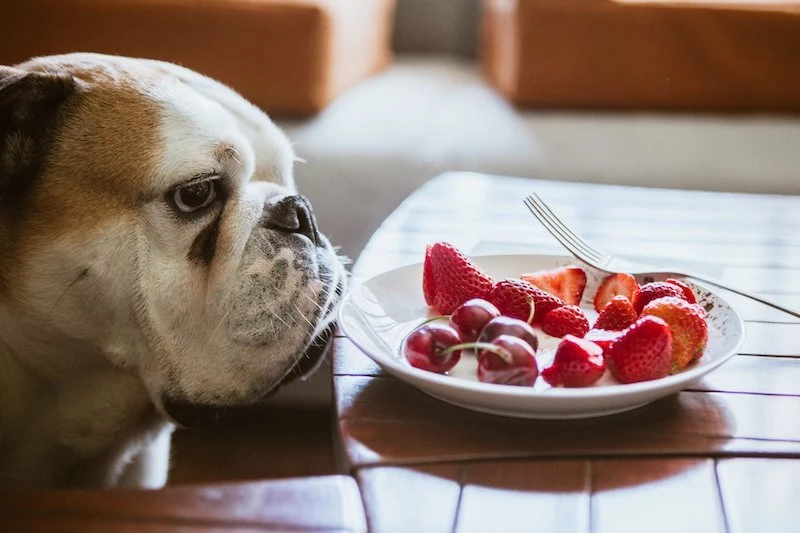
Your 30-Second Safety Win
Let’s do something practical right now. Seriously, grab your phone. Go program this number into your contacts under “Pet Poison Emergency”: ASPCA Animal Poison Control Center at (888) 426-4435. A fee may apply, but having that number ready to go in a panic is priceless. You’ll also want your vet’s number and the closest 24/7 animal hospital saved. Do it now—you’ll be so glad you did if you ever need it.
Final Thoughts & A Time-Saving Tip
Sharing a little snack can be a simple joy, and now you know how to do it safely. Just remember that fruit is a treat, not a staple. A high-quality dog food should always be the foundation of their diet.
Here’s a tip to make it easy: Don’t want to be chopping a single slice of apple every day? On Sunday, spend 10 minutes dicing up some safe fruits. Store them in an airtight container in the fridge for the next few days or in the freezer for weeks. It makes grabbing a healthy, pre-approved treat super fast.
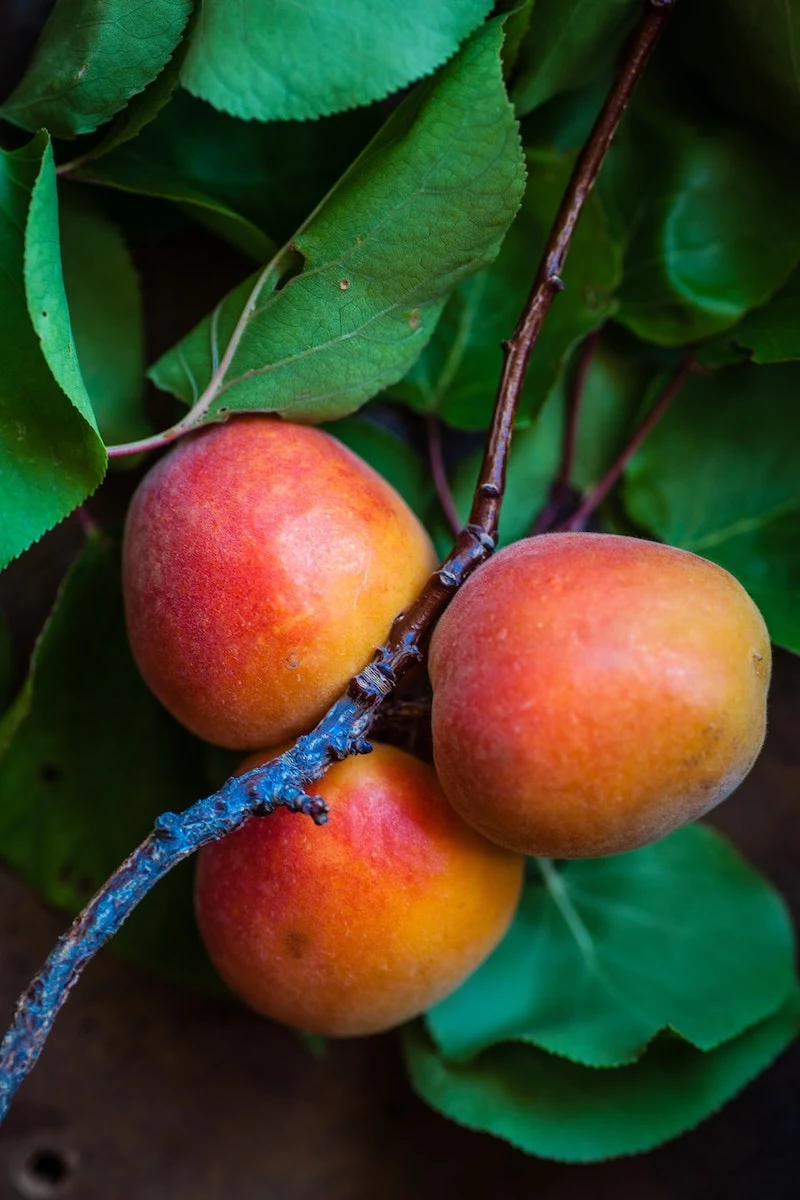
At the end of the day, you know your dog best. Start small, prep carefully, and enjoy that happy little tail wag.
Inspirational Gallery
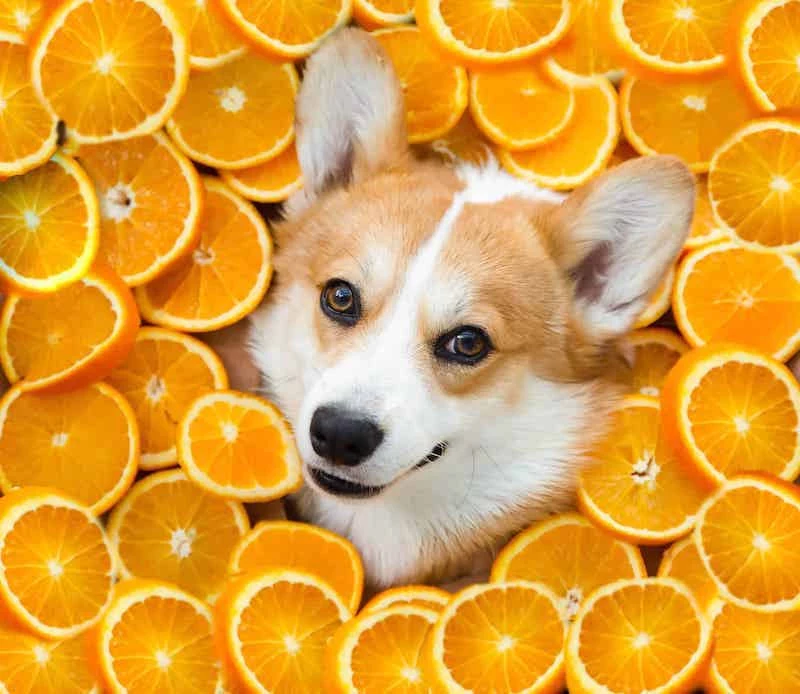
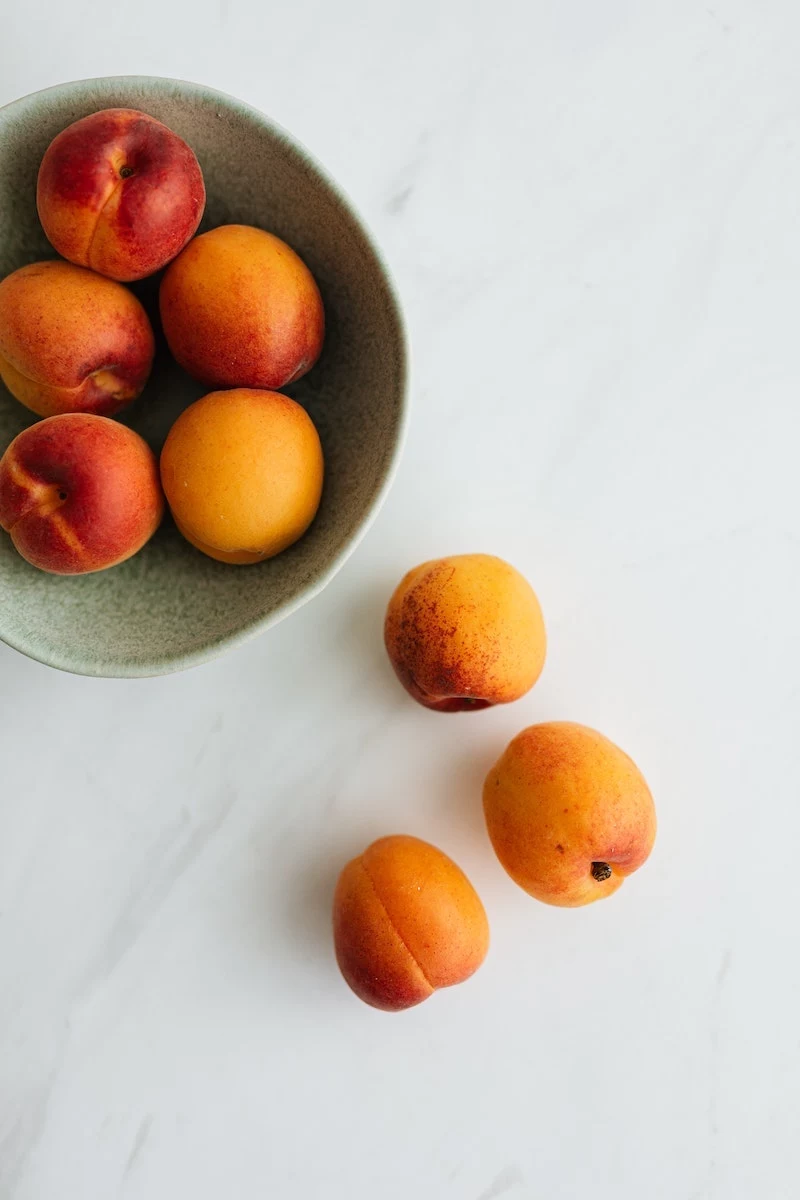
What about the quantity? How much is too much?
Vets often recommend the 10% rule: treats, including fruit, should not make up more than 10% of your dog’s daily caloric intake. For a small 10-pound dog, this could mean just two or three blueberries or a single, thin slice of apple. For a larger 70-pound dog, a few small chunks of watermelon might be appropriate. Overdoing it can lead to an upset stomach or diarrhea, even with safe fruits, due to the high sugar and fiber content.

Did you know? The cyanide in apple seeds and peach pits is a real threat.
While a single seed is unlikely to cause harm, a dog chewing through a whole apple core or a peach pit could ingest a dangerous amount. Cyanide poisoning in dogs can manifest as dilated pupils, difficulty breathing, and bright red gums. It’s a veterinary emergency. This is why preparation isn’t just a suggestion—it’s a critical safety step every single time.
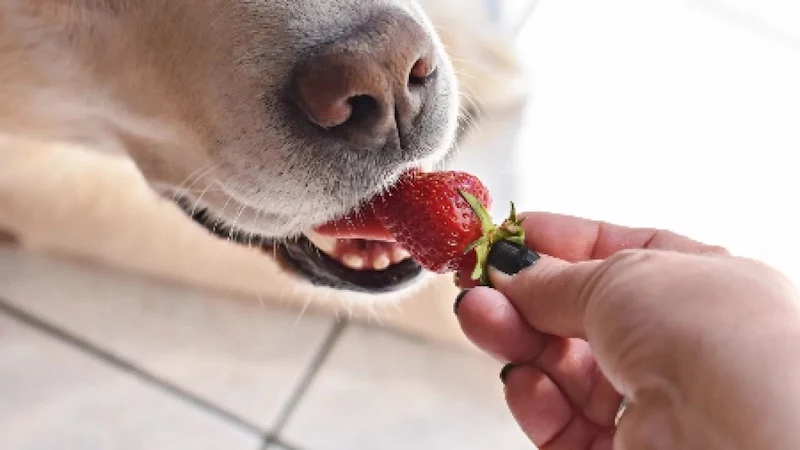
Take fruit treats to the next level by turning them into a fun, cooling game on hot days. It’s a great way to provide mental stimulation and hydration at the same time.
- Freeze blueberry or watermelon purée in an ice cube tray for a simple, lickable pupsicle.
- Stuff a KONG Classic toy with mashed banana and dog-safe peanut butter (check for NO xylitol!) and freeze it for a long-lasting challenge.
- Core an apple, slice it into rings, and remove the seeds for a fun, edible chew toy.
Citrus Fruits: While the flesh of oranges is generally safe in very small amounts, the acidic nature can cause stomach upset. Avoid the peel, white pith, and seeds, as they contain oils that are irritating to a dog’s digestive system.
Berries: Blueberries and strawberries are antioxidant powerhouses. However, steer clear of berries with pits, like cherries, and be cautious with unfamiliar wild berries on hikes, as many can be toxic.










